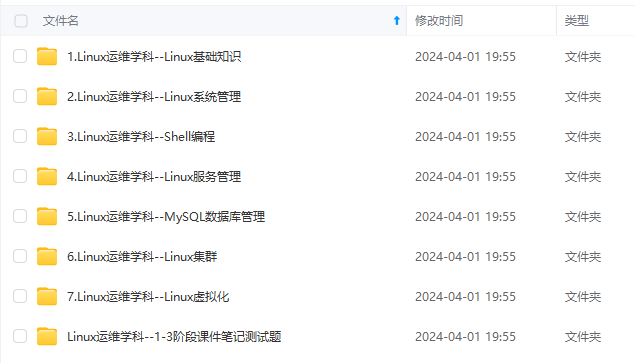Windows中使用docker desktop+kubectl+kind创建k8s集群
Win10使用docker+kubectl+kind创建k8s集群
Kubernetes(k8s) 用于协调高度可用的计算机集群,kind名字来源于 Kubernetes In Docker,顾名思义,就是将 k8s 所需要的所有组件,全部部署在一个docker容器中,可以在一台节点上很方便的部署 Kubernetes(k8s) 集群环境,方便用于学习和测试使用。
其实,可以直接在 docker-desktop 里开启 Kubernetes 集群,更方便体验k8s集群,而且在k8s中部署时可以拉取到docker里的镜像!

一、环境
Win10:直接在win10使用 Kind,没有使用虚拟机。Windows必须支持虚拟化,可以执行“systeminfo”命令来确认。
kind
kind 是一种使用 Docker 容器 nodes 运行本地 Kubernetes 集群的工具。 kind 主要是为了测试 Kubernetes 自身而设计的,但它也可用于本地开发或 CI。 请按照以下说明为 Istio 安装准备好 kind 集群。
准备
二、安装
下载 Kind ,下载地址。Kind 是绿色软件,下载后改名 kind.exe放到 C:\Windows\目录下即可。
下载 kubectl,下载地址。kubectl 是管理 Kubernetes 集群的命令行工具,也是绿色软件,下载后放到 C:\Windows\目录下即可。
安装 Docker ,官网下载安装包,一路下一步安装即可。安装之后,需要打开一次来确认安装是否成功。
验证安装(需配置好环境变量):


三、安装步骤
-
使用下列命令创建一个集群:
kind create cluster --name istio-testing--name用于为集群指定一个名字。默认情况下,集群名为kind。您可以使用下面的命令来创建一个关联外部负载均衡的
kind集群。 否则您需要使用服务的 node 端口访问网关或其他 k8s 负载均衡类型的服务。因为kind默认不提供外部负载均衡。$samples/kind-lb/setupkind.sh--cluster-name istio-testing
kind create cluster
四、验证一下
kubectl cluster-info --context kind-kind
运行结果截图:

删除集群:
kind delete cluster
五、为 kind 设置操作界面
kind 不像 minikube 一样内置了操作界面。但仍然可以设置一个基于网页的 Kubernetes 界面,以查看集群。 参考以下说明来为 kind 设置操作界面。
离线安装k8s仪表板方法(推荐)
kubernetes-dashboard.yaml内容如下:
# Copyright 2017 The Kubernetes Authors.
#
# Licensed under the Apache License, Version 2.0 (the "License");
# you may not use this file except in compliance with the License.
# You may obtain a copy of the License at
#
# http://www.apache.org/licenses/LICENSE-2.0
#
# Unless required by applicable law or agreed to in writing, software
# distributed under the License is distributed on an "AS IS" BASIS,
# WITHOUT WARRANTIES OR CONDITIONS OF ANY KIND, either express or implied.
# See the License for the specific language governing permissions and
# limitations under the License.
apiVersion: v1
kind: Namespace
metadata:
name: kubernetes-dashboard
---
apiVersion: v1
kind: ServiceAccount
metadata:
labels:
k8s-app: kubernetes-dashboard
name: kubernetes-dashboard
namespace: kubernetes-dashboard
---
kind: Service
apiVersion: v1
metadata:
labels:
k8s-app: kubernetes-dashboard
name: kubernetes-dashboard
namespace: kubernetes-dashboard
spec:
ports:
- port: 443
targetPort: 8443
selector:
k8s-app: kubernetes-dashboard
---
apiVersion: v1
kind: Secret
metadata:
labels:
k8s-app: kubernetes-dashboard
name: kubernetes-dashboard-certs
namespace: kubernetes-dashboard
type: Opaque
---
apiVersion: v1
kind: Secret
metadata:
labels:
k8s-app: kubernetes-dashboard
name: kubernetes-dashboard-csrf
namespace: kubernetes-dashboard
type: Opaque
data:
csrf: ""
---
apiVersion: v1
kind: Secret
metadata:
labels:
k8s-app: kubernetes-dashboard
name: kubernetes-dashboard-key-holder
namespace: kubernetes-dashboard
type: Opaque
---
kind: ConfigMap
apiVersion: v1
metadata:
labels:
k8s-app: kubernetes-dashboard
name: kubernetes-dashboard-settings
namespace: kubernetes-dashboard
---
kind: Role
apiVersion: rbac.authorization.k8s.io/v1
metadata:
labels:
k8s-app: kubernetes-dashboard
name: kubernetes-dashboard
namespace: kubernetes-dashboard
rules:
# Allow Dashboard to get, update and delete Dashboard exclusive secrets.
- apiGroups: [""]
resources: ["secrets"]
resourceNames: ["kubernetes-dashboard-key-holder", "kubernetes-dashboard-certs", "kubernetes-dashboard-csrf"]
verbs: ["get", "update", "delete"]
# Allow Dashboard to get and update 'kubernetes-dashboard-settings' config map.
- apiGroups: [""]
resources: ["configmaps"]
resourceNames: ["kubernetes-dashboard-settings"]
verbs: ["get", "update"]
# Allow Dashboard to get metrics.
- apiGroups: [""]
resources: ["services"]
resourceNames: ["heapster", "dashboard-metrics-scraper"]
verbs: ["proxy"]
- apiGroups: [""]
resources: ["services/proxy"]
resourceNames: ["heapster", "http:heapster:", "https:heapster:", "dashboard-metrics-scraper", "http:dashboard-metrics-scraper"]
verbs: ["get"]
---
kind: ClusterRole
apiVersion: rbac.authorization.k8s.io/v1
metadata:
labels:
k8s-app: kubernetes-dashboard
name: kubernetes-dashboard
rules:
# Allow Metrics Scraper to get metrics from the Metrics server
- apiGroups: ["metrics.k8s.io"]
resources: ["pods", "nodes"]
verbs: ["get", "list", "watch"]
---
apiVersion: rbac.authorization.k8s.io/v1
kind: RoleBinding
metadata:
labels:
k8s-app: kubernetes-dashboard
name: kubernetes-dashboard
namespace: kubernetes-dashboard
roleRef:
apiGroup: rbac.authorization.k8s.io
kind: Role
name: kubernetes-dashboard
subjects:
- kind: ServiceAccount
name: kubernetes-dashboard
namespace: kubernetes-dashboard
---
apiVersion: rbac.authorization.k8s.io/v1
kind: ClusterRoleBinding
metadata:
name: kubernetes-dashboard
roleRef:
apiGroup: rbac.authorization.k8s.io
kind: ClusterRole
name: kubernetes-dashboard
subjects:
- kind: ServiceAccount
name: kubernetes-dashboard
namespace: kubernetes-dashboard
---
kind: Deployment
apiVersion: apps/v1
metadata:
labels:
k8s-app: kubernetes-dashboard
name: kubernetes-dashboard
namespace: kubernetes-dashboard
spec:
replicas: 1
revisionHistoryLimit: 10
selector:
matchLabels:
k8s-app: kubernetes-dashboard
template:
metadata:
labels:
k8s-app: kubernetes-dashboard
spec:
securityContext:
seccompProfile:
type: RuntimeDefault
containers:
- name: kubernetes-dashboard
image: kubernetesui/dashboard:v2.5.1
imagePullPolicy: Always
ports:
- containerPort: 8443
protocol: TCP
args:
- --auto-generate-certificates
- --namespace=kubernetes-dashboard
# Uncomment the following line to manually specify Kubernetes API server Host
# If not specified, Dashboard will attempt to auto discover the API server and connect
# to it. Uncomment only if the default does not work.
# - --apiserver-host=http://my-address:port
volumeMounts:
- name: kubernetes-dashboard-certs
mountPath: /certs
# Create on-disk volume to store exec logs
- mountPath: /tmp
name: tmp-volume
livenessProbe:
httpGet:
scheme: HTTPS
path: /
port: 8443
initialDelaySeconds: 30
timeoutSeconds: 30
securityContext:
allowPrivilegeEscalation: false
readOnlyRootFilesystem: true
runAsUser: 1001
runAsGroup: 2001
volumes:
- name: kubernetes-dashboard-certs
secret:
secretName: kubernetes-dashboard-certs
- name: tmp-volume
emptyDir: {}
serviceAccountName: kubernetes-dashboard
nodeSelector:
"kubernetes.io/os": linux
# Comment the following tolerations if Dashboard must not be deployed on master
tolerations:
- key: node-role.kubernetes.io/master
effect: NoSchedule
---
kind: Service
apiVersion: v1
metadata:
labels:
k8s-app: dashboard-metrics-scraper
name: dashboard-metrics-scraper
namespace: kubernetes-dashboard
spec:
ports:
- port: 8000
targetPort: 8000
selector:
k8s-app: dashboard-metrics-scraper
---
kind: Deployment
apiVersion: apps/v1
metadata:
labels:
k8s-app: dashboard-metrics-scraper
name: dashboard-metrics-scraper
namespace: kubernetes-dashboard
spec:
replicas: 1
revisionHistoryLimit: 10
selector:
matchLabels:
k8s-app: dashboard-metrics-scraper
template:
metadata:
labels:
k8s-app: dashboard-metrics-scraper
spec:
securityContext:
seccompProfile:
type: RuntimeDefault
containers:
- name: dashboard-metrics-scraper
image: kubernetesui/metrics-scraper:v1.0.7
ports:
- containerPort: 8000
protocol: TCP
livenessProbe:
httpGet:
scheme: HTTP
path: /
port: 8000
initialDelaySeconds: 30
timeoutSeconds: 30
volumeMounts:
- mountPath: /tmp
name: tmp-volume
securityContext:
allowPrivilegeEscalation: false
readOnlyRootFilesystem: true
runAsUser: 1001
runAsGroup: 2001
serviceAccountName: kubernetes-dashboard
nodeSelector:
"kubernetes.io/os": linux
# Comment the following tolerations if Dashboard must not be deployed on master
tolerations:
- key: node-role.kubernetes.io/master
effect: NoSchedule
volumes:
- name: tmp-volume
emptyDir: {}
执行以下命令:
kubectl apply -f kubernetes-dashboard.yaml-
运行以下命令以部署操作界面(在线安装方法)
kubectl apply -f https://raw.githubusercontent.com/kubernetes/dashboard/v2.5.1/aio/deploy/recommended.yaml -
验证操作界面已经部署并且正在运行。
kubectl get pod -n kubernetes-dashboard
-
授权kube-system默认服务账号
# kube-system-default.yaml apiVersion: rbac.authorization.k8s.io/v1 kind: ClusterRoleBinding metadata: name: kube-system-default labels: k8s-app: kube-system roleRef: apiGroup: rbac.authorization.k8s.io kind: ClusterRole name: cluster-admin subjects: - kind: ServiceAccount name: default namespace: kube-system --- apiVersion: v1 kind: Secret metadata: name: default namespace: kube-system labels: k8s-app: kube-system annotations: kubernetes.io/service-account.name: default type: kubernetes.io/service-account-tokenkubectl apply -f kube-system-default.yaml -
需要用 Token 来登录到操作界面,使用以下命令获取 token
对于Windows环境
对于Mac环境$TOKEN=((kubectl -n kube-system describe secret default | Select-String "token:") -split " +")[1] kubectl config set-credentials docker-desktop --token="${TOKEN}" echo $TOKENTOKEN=$(kubectl -n kube-system describe secret default| awk '$1=="token:"{print $2}') kubectl config set-credentials docker-desktop --token="${TOKEN}" echo $TOKEN运行结果:
 最好将 token 保存起来,不然每次登录到操作界面时得重新运行上述步骤 4。复制token的值,粘贴到登录操作界面。
最好将 token 保存起来,不然每次登录到操作界面时得重新运行上述步骤 4。复制token的值,粘贴到登录操作界面。 -
使用 kubectl 命令行工具运行以下命令以访问操作界面:
kubectl proxy# 执行命令结果(注意此窗口不能关闭,否则下一步操作无法成功)

登录k8s仪表板,在浏览器地址栏中输入以下内容
http://localhost:8001/api/v1/namespaces/kubernetes-dashboard/services/https:kubernetes-dashboard:/proxy/


参考以下资料
https://blog.csdn.net/shida_csdn/article/details/85111941?spm=1001.2014.3001.5506
更多推荐
 已为社区贡献1条内容
已为社区贡献1条内容









所有评论(0)